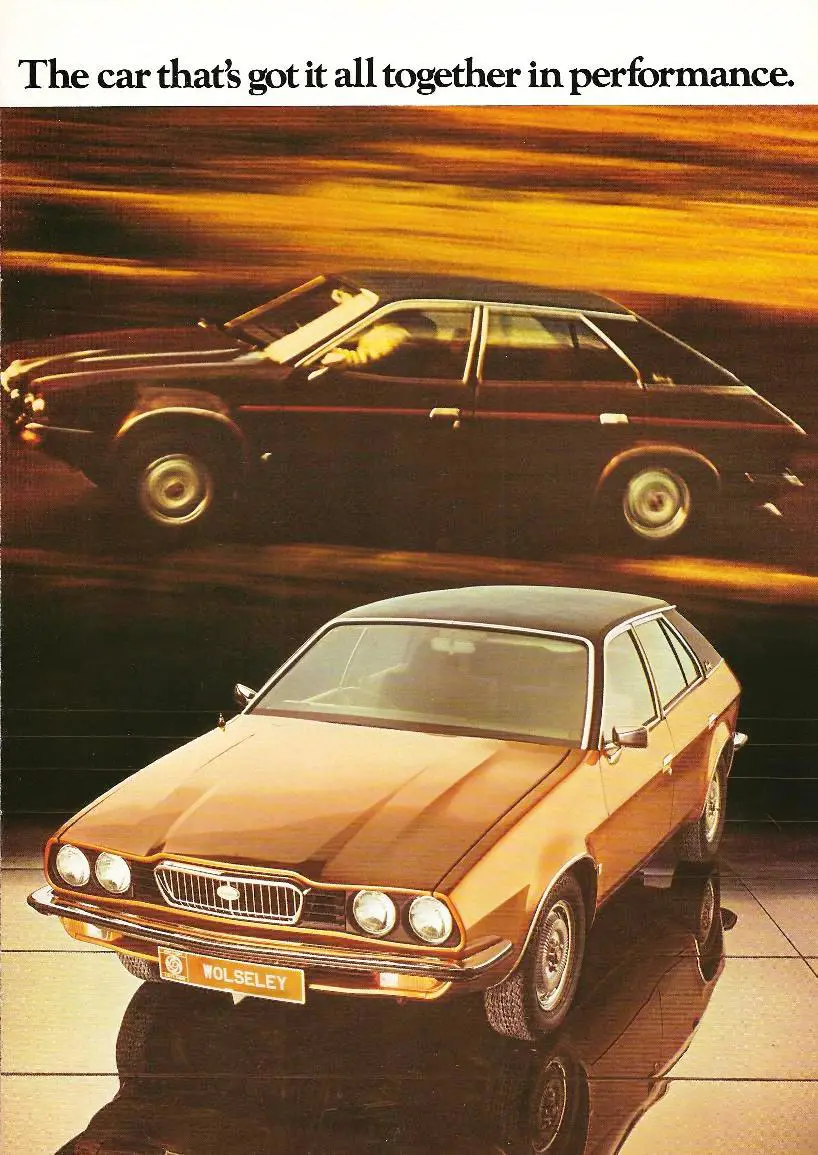THE LAST OF THE WOLSELEYS: A TRIBUTE
19 October 2021
Forty-six years ago, Clive Richardson of Motor Sport compared the recently launched Citroën CX with a new British rival. He concluded:“If the Citroën was worthy of the ‘Car of the Year’ award, the credit must go to the CX 2200; the 2000 has too many pitfalls. But the Wolseley in my view is the finest car to come out of British Leyland since the XJ6, with a general performance, finish and specification worthy of a higher price. Remarkable value for money, in fact. It is a car the British motor industry should be proud of.”
Put bluntly, too many people have underrated the Leyland ‘Wedge’ range for too many years. When the Austin, Morris and Wolseley badged 18/22 range replaced the BLMC ‘Landcrab’ in March of 1975, they were virtually unique in the British car market in terms of both looks and technical ambition.

The Wedge’s designer Harris Mann stated, “The brief was to design a spacious family saloon with styling advanced enough to last right through the 1970s and beyond”. Shortly after its launch, the BL dealership Mann Egerton informed the press, “We now have a car which, because of its advanced styling and comprehensive equipment, is more than a match for the importers”.
The not easily impressed Car magazine evaluated the Wolseley opposite the CX 2000 and the BMW 518. They did not enjoy the Wedge’s steering or appetite for fuel but did praise its spaciousness, ride and equipment levels. Frank Page of The Observer found the Wedge to be “very impressive” on the road, while the Wolseley’s cabin offered “very high standards for the price”.
For £2,999, the Wolseley indeed represented excellent value for money. There was a vinyl roof and velour upholstery to impress the neighbours and other Little Chef patrons, alike. The specification also included a radio, a multi-adjustable driver’s seat, two cigar lighters, tinted glass and PAS. In addition, the grille naturally featured the marque’s trademark illuminated ‘Ghost Light’.
The 18/22 line-up was not devoid of flaws; the manual gear change had room for improvement, and some drivers found the six-cylinder models relatively sedate. However, perhaps its main challenge was being made by British Leyland at a particularly turbulent point in its history. As a result, quality control is best described as ‘variable’.
HM Government commissioned a fleet of flagship Wedges as transport for mid-ranking ministers, but the name was now on borrowed time. On the 27th August 1975, Ian Morton reported in The Evening Standard that “I have been testing a car which, I believe, to be the last to carry the Wolseley badge”.
This sadly proved to be the case, and by the following month, one of Britain’s oldest car marques was no more The Wedge was now sold under the name ‘Princess’, losing BL the chance to reinvent Wolseley for a new generation of motorists. Today a mere six are believed to remain on the road. And each of them a testament to the ‘Biggest news since the Mini’:
Why choose Lancaster Insurance?
Here at Lancaster, we love classic cars as much as you do and we understand what it takes to protect them for future generations.
We have links with some of the top classic car clubs around the country and some of our policies even offer discounts of up to 25% for club members.
Other benefits of classic car insurance through Lancaster can include:
- Historic rally cover
- Static show cover
- Limited mileage discounts
- Choice of repairer
- 24-hour claims helpline
Give your classic the protection it deserves and get a quote for your classic car today.
